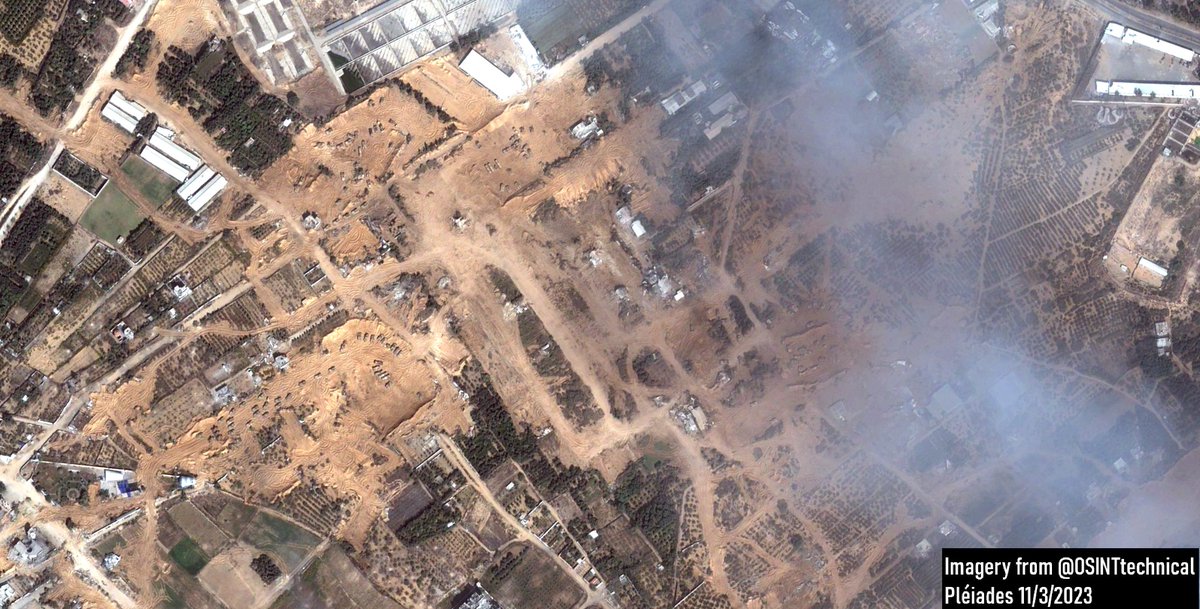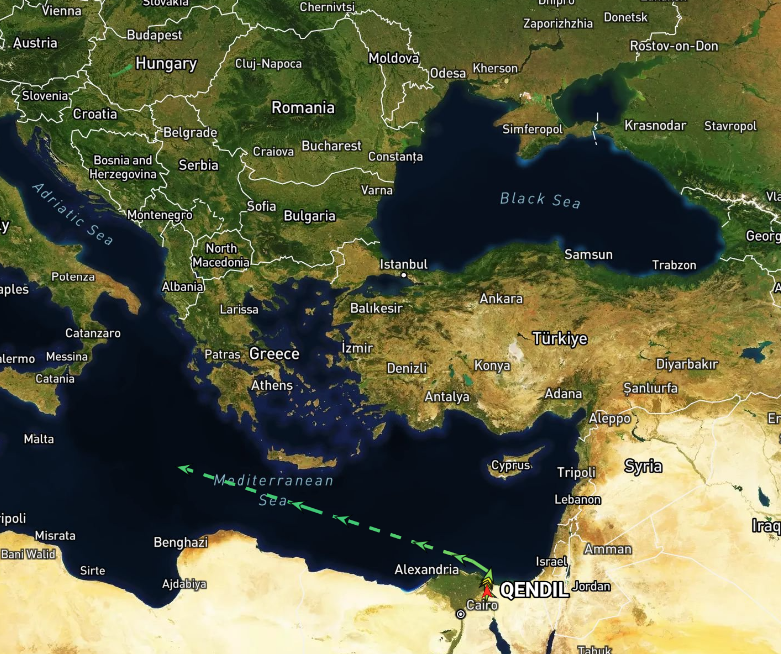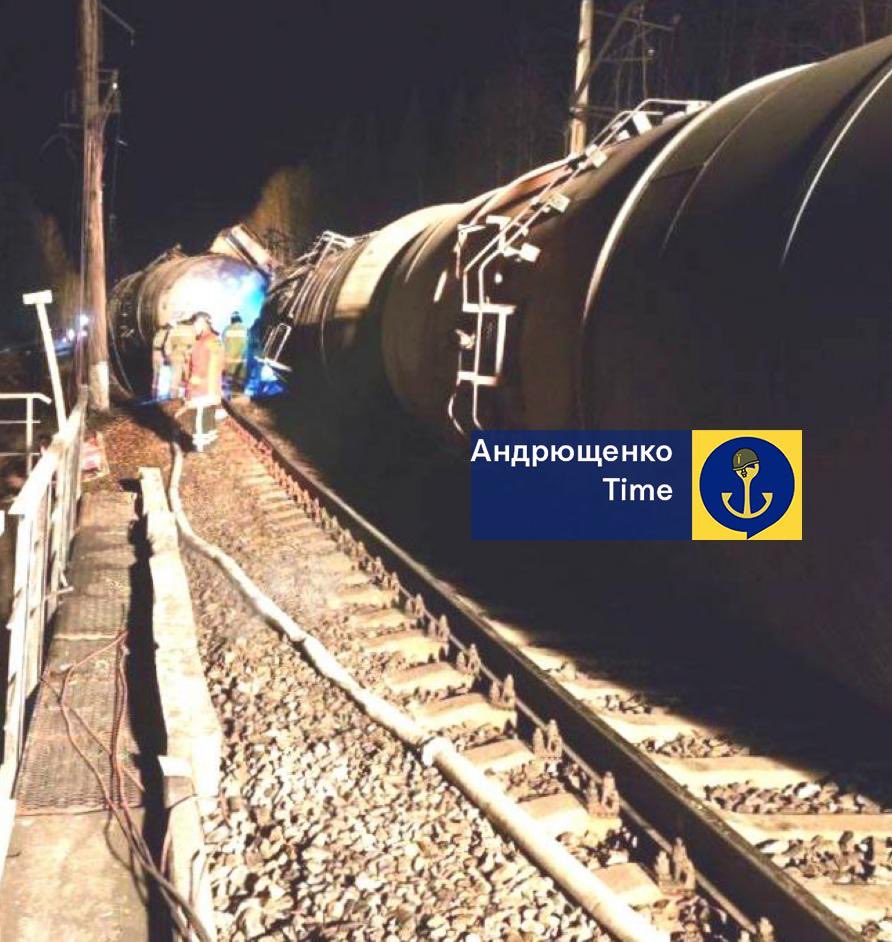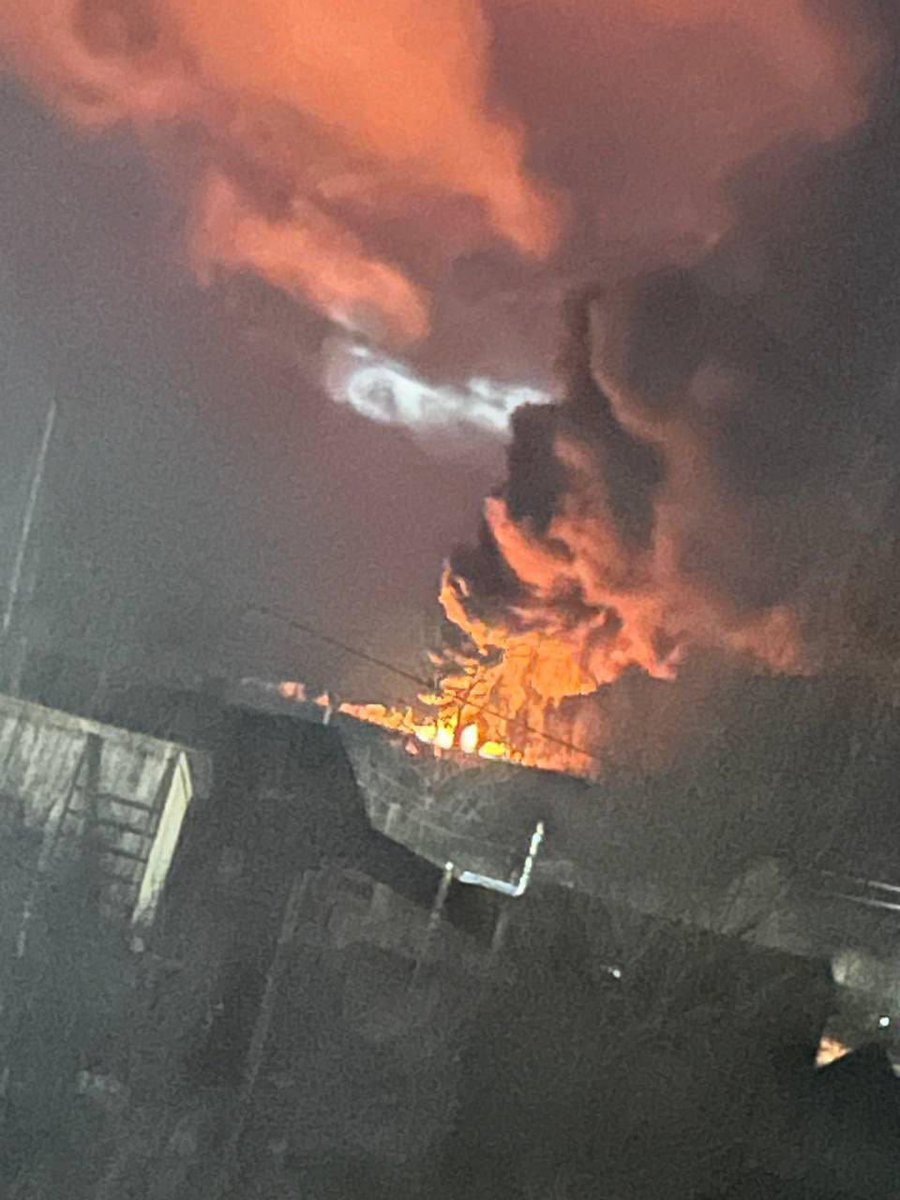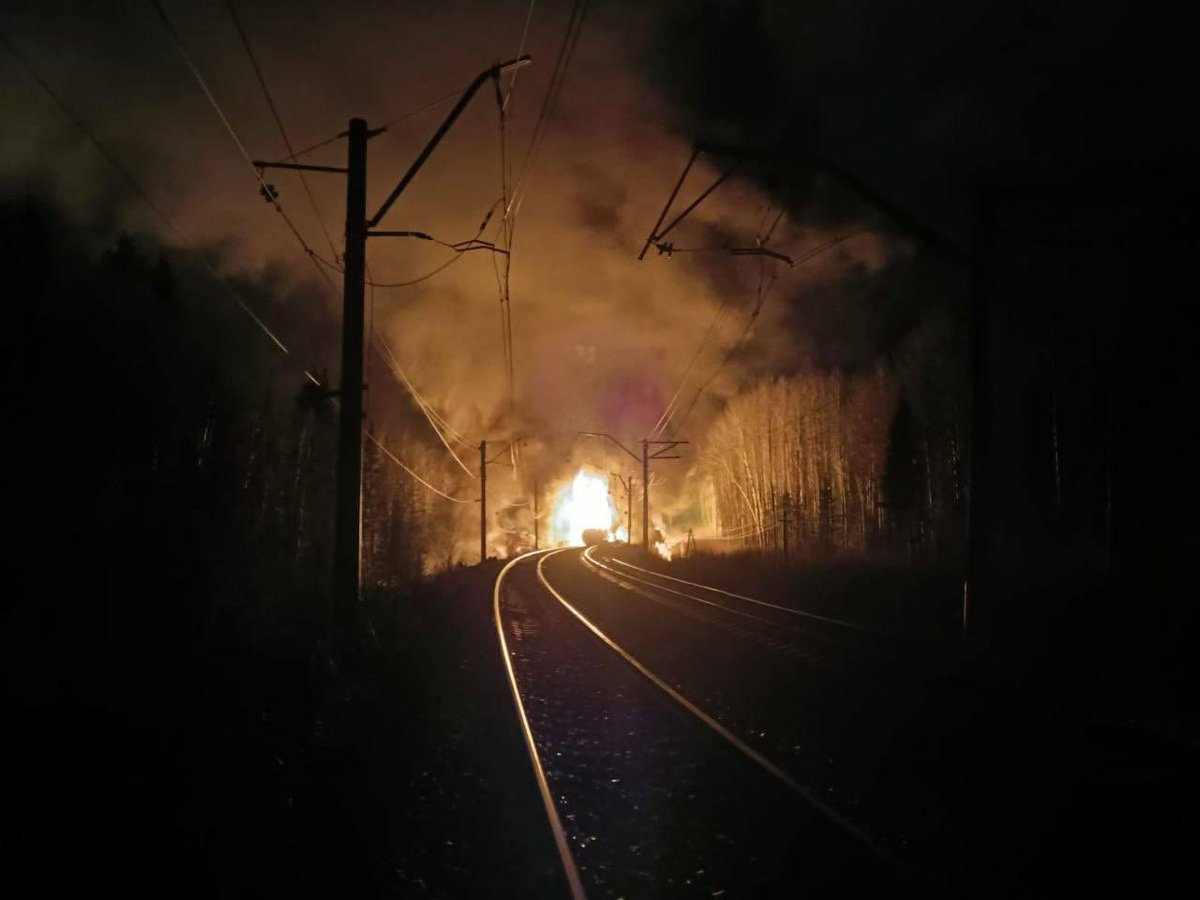Another quick look at the IDF's armor-driven strategy for its advance into the central Gaza Strip.
On 11/3, six distinct strongpoints anchored a thin push into the Gaza Strip. Each was effectively a series of large dirt berms and revetments built by D-9 bulldozers.
(thread)
On 11/3, six distinct strongpoints anchored a thin push into the Gaza Strip. Each was effectively a series of large dirt berms and revetments built by D-9 bulldozers.
(thread)
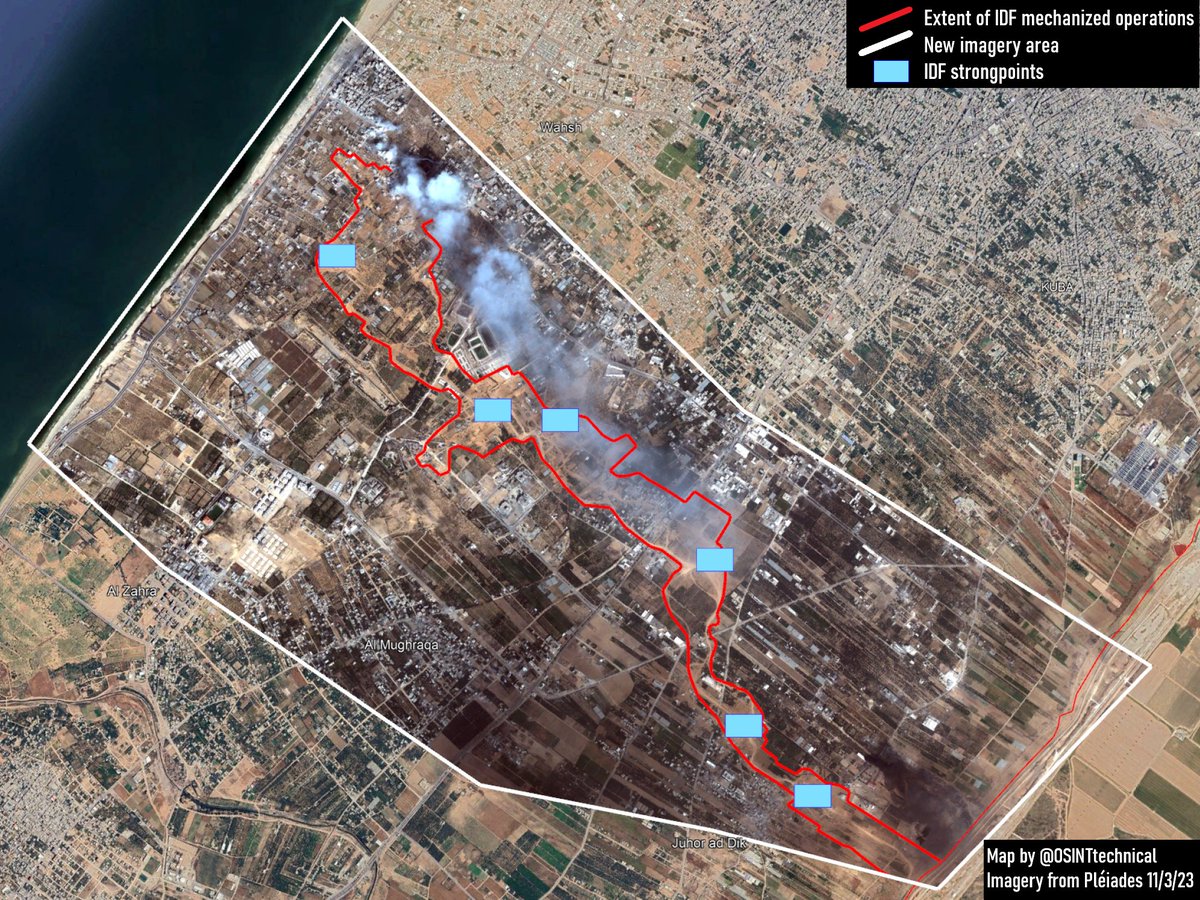
The first IDF strongpoint is only about 1km from the initial entry point east of Juhor ad Dik.
Hamas released at least one video of an engagement in the area, and the town was heavily damaged, receiving what appears to be the most severe damage from the entire push so far.
Hamas released at least one video of an engagement in the area, and the town was heavily damaged, receiving what appears to be the most severe damage from the entire push so far.
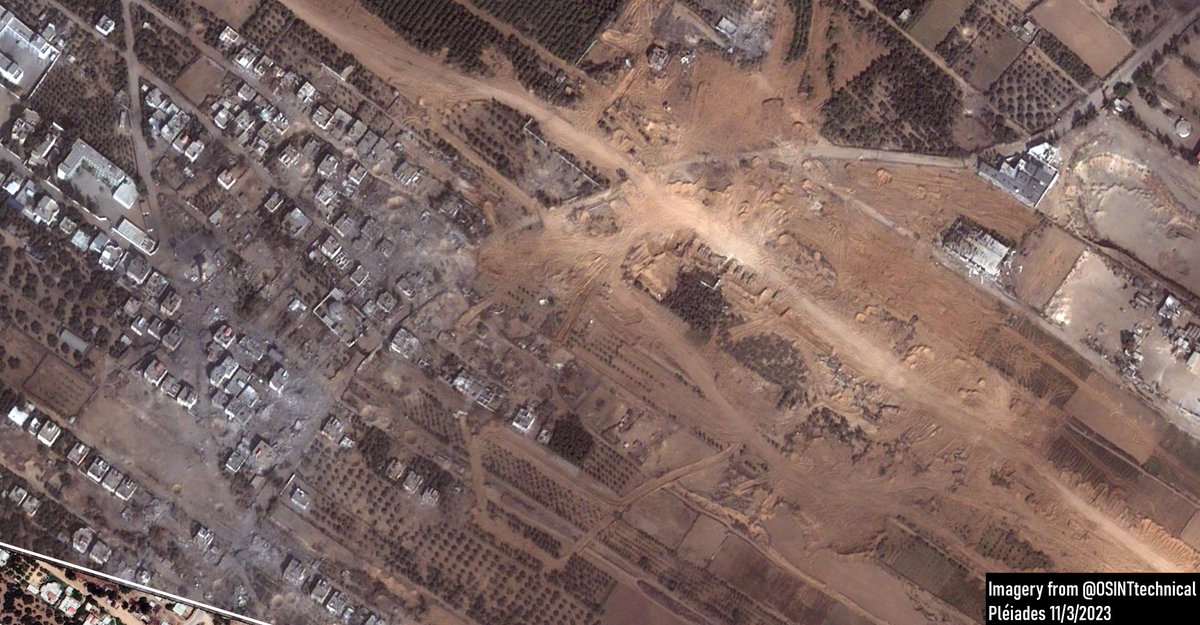
The next strongpoint was built roughly a half kilometer further on, anchoring the northern side of Juhor ad Dik. 
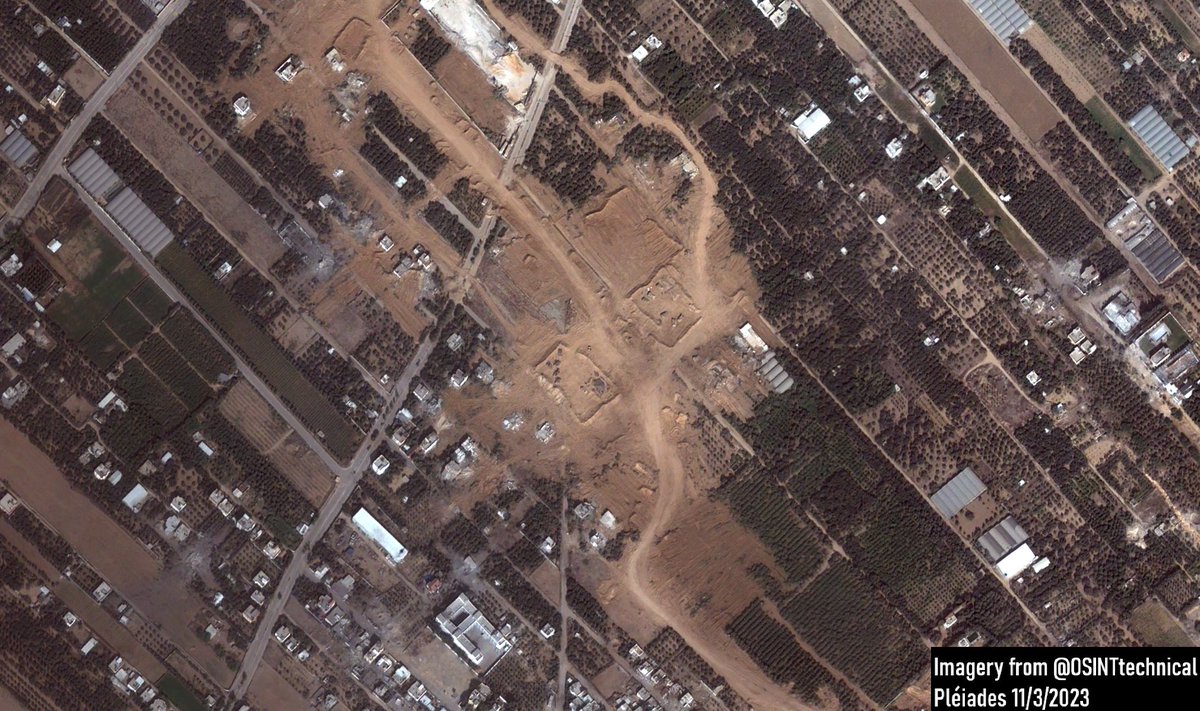
The next one is a kilometer further to the north, with a controlling position overlooking the central Salah Al Deen road. 

This is still a fairly active area, with a group preparing to move south from one of the strongpoints, note the four D-9 bulldozers leading the group. 

This is the strongpoint closest to the front on 11/3, it is made up of a semicircle of dirt berms (highlighted red), with at least 89 vehicles parked inside. 

The tip of the advance can be seen here, led by D-9 bulldozers, armored vehicles, and backed by a Puma AEV equipped with a Carpet mine clearing system. 
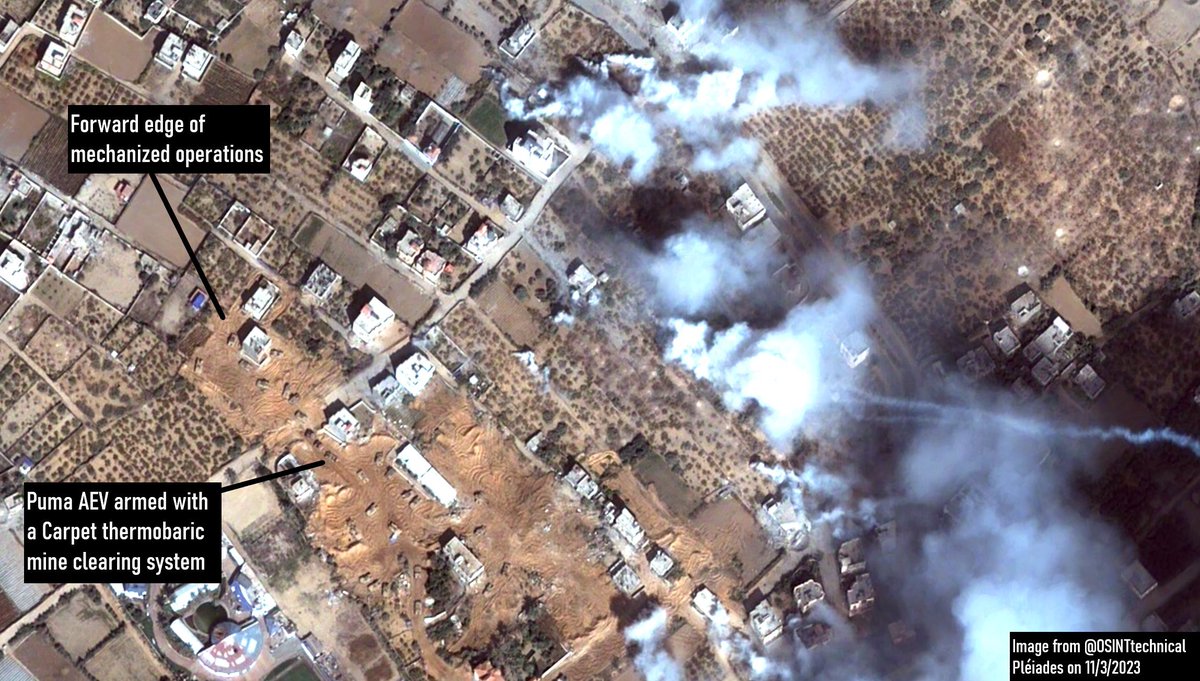
Thread from yesterday
https://x.com/Osinttechnical/status/1720652759521714291
• • •
Missing some Tweet in this thread? You can try to
force a refresh

